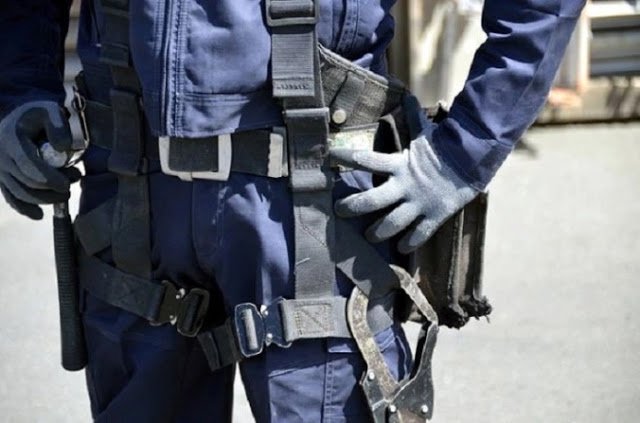The construction sites are always prone to some accidents, and hence its always advisable to take necessary measure to ensure the safety of the ones who are working and also for the people around. There are various heights and fall protection systems and protocols which one needs to adhere to whether they are working in the on a commercial project or residential. A determined focus on safety is of the utmost importance when working at heights. The margin for error is zero. You have to be prepared and geared up to protect your team every time they are working a height. Fall protection is required 4 feet above the ground.
Key Parts of Heights and Fall Protection Systems:
There are various components which form the height and fall protection systems, here are a few popular and mandatory ones:
- Employ Railings to Good Use– The railing is a form of passive protection and the easiest way to keep your workers safe and adhere to compliance standards. There are different railing systems for every rooftop type. For flat or low-slope roofs, there are non-penetrating railings. Then, there are parapet mounted railings and metal roof railings. You can also use pre-fabricated railings. Guardrail systems or railings are fairly popular and can be easily mounted on platforms, rooftops, scaffolds, decked floors, observation platforms, mobile work surfaces, ladder way points of access. Good quality guardrail ensures durability and enhanced safety.
- Go for Proper Personal Protective Equipment– When using Personal Fall Arrest Systems, make sure that you are using the proper equipment. A PFPS or personal protective equipment comprises of three singular items which work together, these include, body harness, anchor and connecting device. All of these devices work together.
When selecting full-body harnesses, make sure that they meet the regulatory standards. The price differential will be based on extra functionalities like D-rings, fireproof material, or comfort, etc. It depends on your needs. When it comes to selecting a lanyard, it again depends on your need. You could either get a 6’ lanyard with a deceleration device or a retractable one.
- Inspect the Heights and Fall protection Systems – Get your harnesses and lanyards periodically inspected by authorized personnel. A thorough inspection from time to time is common sense, but not always done. Make sure you never miss this step. A regular inspection ensures that your system working as per the specified standards and is safe for the ones who are using it.
- Understand the Fall Distance– Another common sense advice while choosing the heights and fall protection systems is to make sure is that the heights and fall protection systems don’t let you hit the lower level even before it engages. Let’s understand this with the help of an example: If a worker is at 10-12’ off the ground, and there’s a 6’ lanyard in place, and a deceleration device, there are reasons why it wouldn’t work. Don’t forget that you have to account for the 3.5’for the device to be deployed. This means the lanyard is effectively 9.5’ long. So it’s not going to work. The actual fall distance needs to include the length of your lanyard upon deployment, your body length below the D-ring, and sags in the harness and anchor system.
- Take your Pick for Working at Heights (Scaffold vs. Lift vs. Ladder)– We already know that harnesses do not come in one-size-fits-all solutions. In the same way, when working at heights, depending on the situation, a scaffold may be the best solution for you. The scaffold can be equipped with rails, thereby adhering to fall protection standards. In another situation, the scaffolds may not be feasible for you. Further, in a different situation, you may find that a lift serves all your needs. Also, based on the type of lifts, the need to wear a harness and a lanyard may be determined. In some kinds of lifts, they may not be required at all. At other times and situations, you may find yourself in need for a ladder. At such a point, the requirements for fall protection get a little trickier. The bottom line is that you have got to assess and evaluate your situation carefully. Based on your needs, your safety equipment needs will also change. The first step to selecting the right equipment for height safety and fall protection systems is choosing the right kind of equipment, that is going to be suitable for the task.
- Use the Lifts properly– In a boom lift, the person must be adequately tied-off. They need to be secured to the anchor point. They also need to have a proper lanyard. With scissor lifts, don’t forget to close the gate or secure the chain. Lastly, plant your feet firmly on the platform.
Warning or Marking Systems- Another important part of heights and fall protection systems is the warning line system. These are erected on a flat or low-sloped roof to warn the workers that they are approaching the unprotected area. These include rope, chain or wire.
Safety Net Systems- Safety nets are a must if the construction is undergoing at a certain height. It prevents the workers from falling down and protects them from elevated heights.
| Vertical Distance | Minimum Required Horizontal Distance |
| Up to 5 ft | 8 ft |
| Greater than 5 ft for up to 10 ft | 10 ft |
| Greater than 10 ft for up to 30 ft | 13 ft |
| More than 30 ft | Safety net not permitted as fall protection |
In addition to these heights and fall protection systems, it is important to have trained staff around you. This helps in ensuring better safety measures.
Conclusion- The heights and fall protection systems are mandatory for every construction work, failure to adhere to do so can put you in legal trouble. It’s always advisable that you must check with the local authorities the necessary safety measures before beginning the work.



